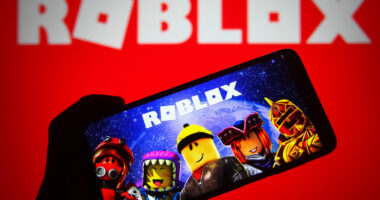A “HIDDEN” symbol on Google’s browser is baffling Brits and their ignorance could cost them thousands of pounds.
Tech experts have issued a warning about a padlock icon on Google Chrome which many people fail to spot or else don’t understand.
Some 63 per cent of Brits think they know what it means but only seven per cent are correct, according to a new study by Cardiff Metropolitan University in Wales.
You might assume the icon indicates the website you’re looking at it safe and trustworthy or else free or viruses or suspicious links.
Yet it actually only means the data being sent from your computer is encrypted, dating back to the early days of the internet when this could be rare.
This means the data being shared can’t be intercepted by a third party, the Mail reported.
Read More On Cyber Crime
But websites showing the padlock can still leave users vulnerable to cyber-criminals, academics now say.
People behind the site itself could still steal and misuse your private information, especially if it’s a “phishing” operation by which hackers can set up fake bank accounts using your personal data.
This new study’s lead researcher Fiona Carroll said: “Drawing a parallel with the physical world, it is the gate and pathway to the house that is locked – it doesn’t mean that everything inside the house is locked as well.
“The findings highlight many of the participants feel that the padlock represents a safe website which it clearly does not.
Most read in Tech
“The current desktop web browser application design is not fit for purpose.”
The lock symbol showed a site was using HTTPS to protect connections, helping make info impenetrable for hackers.
But sites no longer need the symbol since more than 99 per cent of all pages load in Google Chrome using HTTPS encryption – including websites which are disguising phishing attacks.
The icon had been inherited from a time when HTTPS were “rare”, Google explained.
The web giant has acknowledged the potential problems and revealed plans in May to remove the padlock .
The firm published a blog post promising to replace it with a more neutral-seeming “tune icon”.
Google added: “Misunderstandings are so pervasive that many organisations, including the FBI, publish explicit guidance that the lock icon is not an indicator of website safety.”
Experts have suggested the padlock can prove useful in some cases, warning people not to use online retailers without them since hackers could intercept payment card details that way.
Meanwhile, users of Google’s Android phones have been complaining about one button’s removal.
Android owners have also been urged to install the newest security updates to protect against criminals.
Google itself has also issued a new warning that over the next week it plans to purge millions of accounts in a security crackdown.









